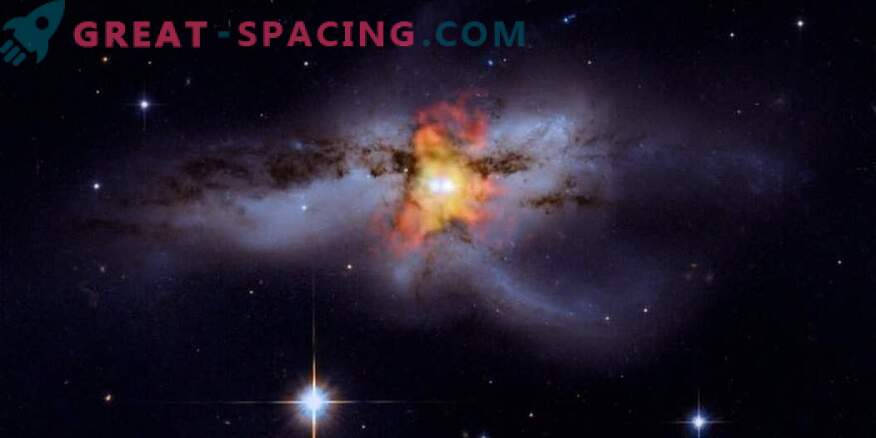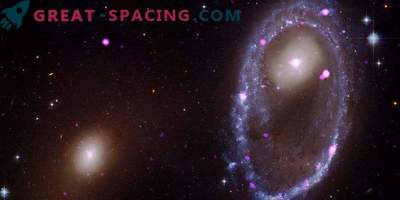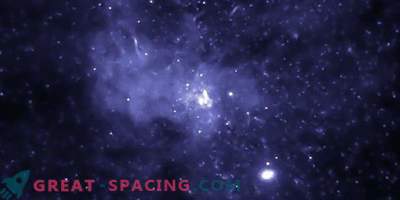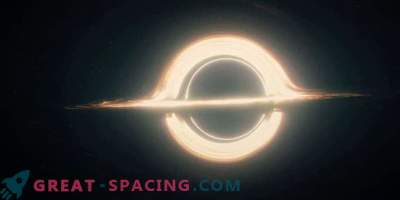
X-ray image of NGC 6240 taken by the Chandra X-ray Observatory overlaid on the optical image of the galaxy. X-rays of two active galactic nuclei are represented by blue sources.
Scientists from the University of Colorado (Boulder) were able to fix the final stage of the merger of two galaxies. We are talking about NGC 6240. Most of the galaxies in space have only one supermassive hole in the center. But there are two of them in NGC 6240, and they are close to becoming one.
Researchers report that gases thrown out by black holes in combination with gases from stars could lead to the creation of new stellar objects. In addition, these winds have managed to form a massive gas cloud in the form of a butterfly.
NGC 6240 seems to be a particularly interesting object, because events with two central supermassive holes are extremely rare. Due to this, an unusual shape is created. For example, the Milky Way has a neat disk. But gas streams fly out of NGC 6240 for a length of 30,000 light years, resembling the flapping of a butterfly's wings. Analysis shows that the nebula was created by two different forces. The northwest corner is a product of stellar winds. But the northeast - ejected gases from black holes. Two wind streams are connected and squeeze out about 100 times the solar mass per year from the galaxy.
Such an outflow can seriously affect the final appearance of the galaxy. When merging, there is an active outbreak of the formation of new stars. But the black hole and stellar winds can slow down this process.











































